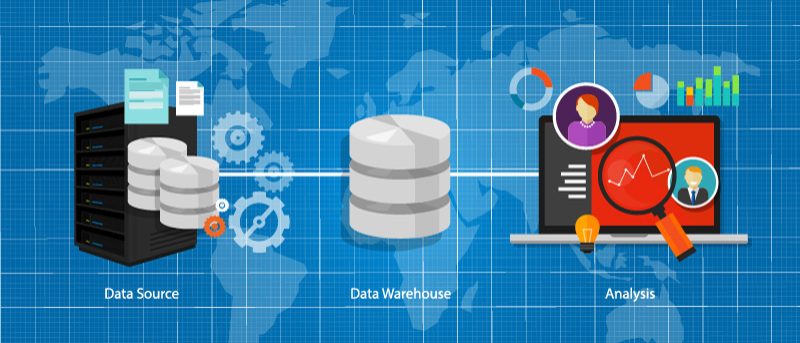Nowadays most businesses deal with some sort of data – their transactions, clients, product just to name a few types – and the larger the size of the data, the bigger the problems that arise. Large enterprises with long history and thousands of data points operate massive databases, build, developed and expanded throughout many years. Here’s where the real problems start – imagine your business, a Fortune 500-sized company, has gathered terabytes of data from multiple sources, which is stored in multiple databases, build by different teams and functioning in a very convoluted architecture. In the data there is a lot of hidden potential, but extracting it, combining and processing it to the point where it can be analysed and insights can be made, is a mammoth task.
Enter data warehousing companies like Snowflake which collect all the data, combine them into a single virtual place (“the warehouse”) and make it easy to run analysis on. It is compatible with pretty much all existing cloud databases (Azure, AWS or Google) and can shorten data extraction processes which used to take hours to a couple of minutes.
Snowflakes business strategy is unique in a sense that it sells a SaaS product that saves time and money (the cost of building an in house data warehouse is said to be over 350,000 USD per year [1]) to the largest companies in the world. The value of their product rises with the size and complexity of the client’s database systems, and so it is no wonder that Snowflake targets only the largest players on the market. What is even more interesting is that Snowflake operates at very low, or even negative margins [2], which is said to be mostly due to high costs of customer acquisition – after all, it takes incredibly skilled and experienced salespeople to land deals with the big brands they tend to work with. This seems to be an issue, as the cost of customer acquisition looks like typical, startup-like “burning of the cash”, however if we look at the data regarding customer retention we will see that it is a healthy, well run business: Snowflake has an incredible 170% net revenue retention rate with more than 6,000 customers. They customers are extremely happy with their services and even if, hypothetically, the company stopped pursuing any new deals now, they could still be surviving off their existing client base. After all, they manage to simplify an extremely complex problem of data processing and storage on behalf of the companies, saving them millions of dollars.
Time will tell how the data warehousing industry will evolve, but at its current course Snowflake can very well become a monopoly in the market, just like Salesforce is in CRMs or Slack is in mid-tier company communication.
References:
[1] Iqbal Ahmed, Everything You Need To Know About The Cost Of Building A Data Warehouse, 31.03.2021, https://www.astera.com/type/blog/building-a-data-warehouse-cost-estimation/
[2] Snowflake Inc., Snowflake Reports Financial Results for the Fourth Quarter and Full Year of Fiscal 2022, 02.03.2022, https://investors.snowflake.com/news/news-details/2022/Snowflake-Reports-Financial-Results-for-the-Fourth-Quarter-and-Full-Year-of-Fiscal-2022/default.aspx


